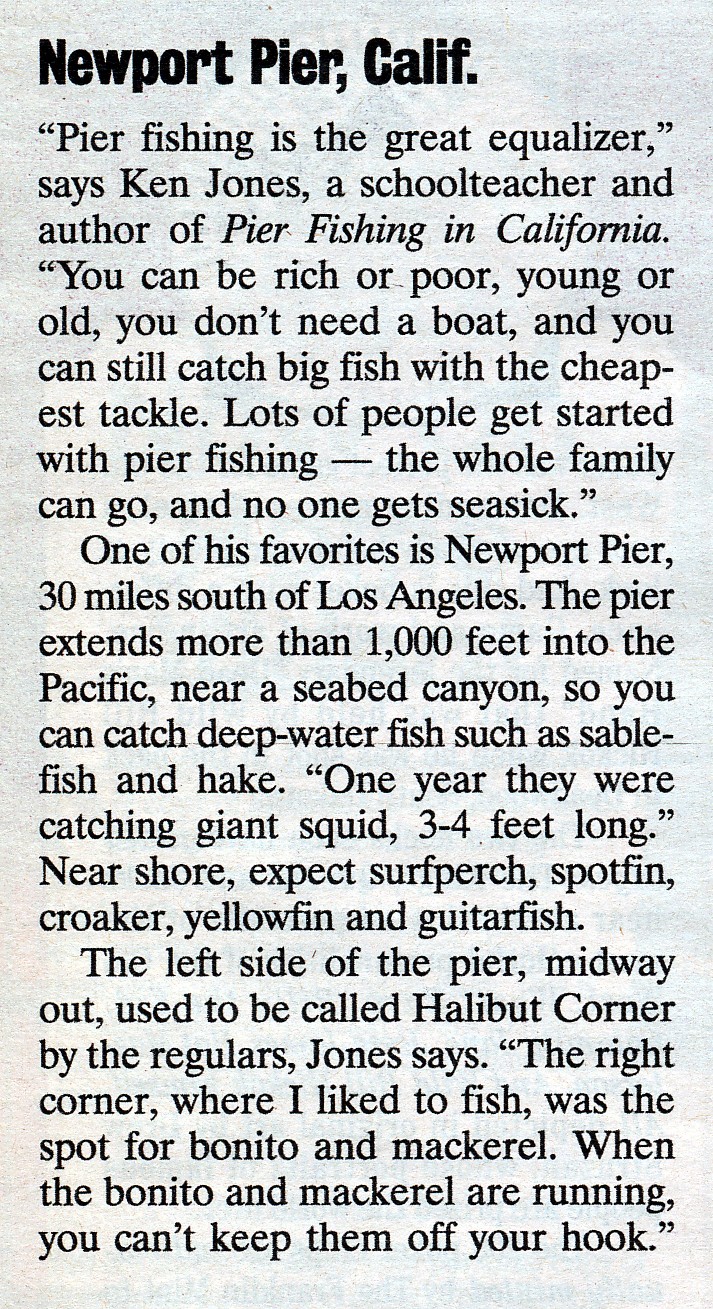 An angel shark taken at the Cayucos Pier in 2007
An angel shark taken at the Cayucos Pier in 2007
Order Squatiniformes — Angel Sharks — Family Squatinidae
Species: Squatina californica (Ayres, 1859); from the Latin squatina (an ancient name for a related Mediterranean species) and californica (describing where the fish was first caught).
Alternate Names: Angel shark, monkfish, squat and squato. Called angelote or tiburón angel in Mexico.
Identification: These sharks look like a ray, or a cross between a shark and a ray and are often mistaken for rays by anglers. However, a couple of items gives them away: (1) angel sharks have a flattened body similar to rays but have broad pectoral fins that are unattached to the head, and (2) the mouths of angel sharks are up front of the head, not underneath as in rays. Their camouflage coloring, typically sandy gray, gray brown, or reddish with dark spots, allows them to lie relatively unnoticed on the bottom. The belly is white. Angel sharks are unique in that the lower lobe of the tail is longer than the upper lobe.
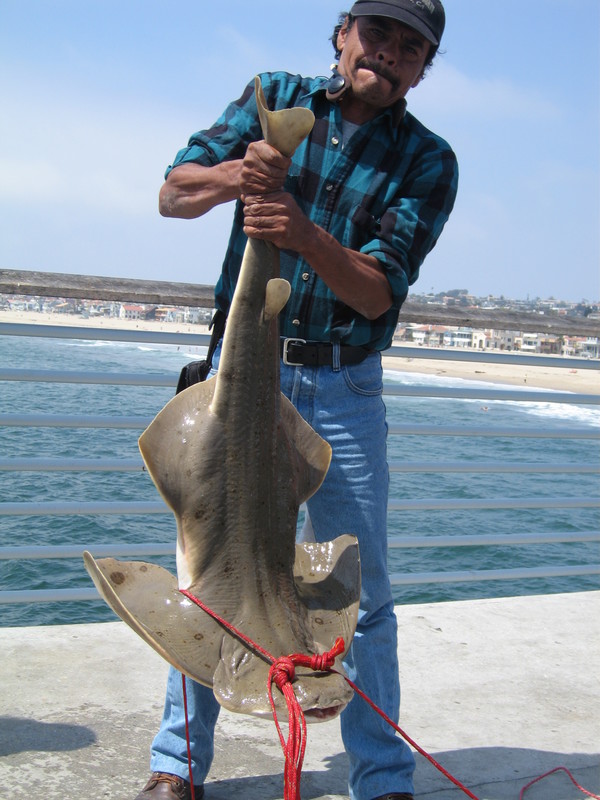 An angel shark taken at the Hermosa Beach Pier in 2005
An angel shark taken at the Hermosa Beach Pier in 2005
Size: Reaches a length of 5 feet and a size of 60 pounds. Most caught from piers are under 4 feet in length.
Range: Bahia Magdalena, southern Baja California, and the Gulf of California to Puget Sound, Washington. One unverified record from Alaska; rare north of California.
Habitat: Offshore and in shallow bays in sand or mud bottoms near rocky reefs. Generally found from 10-600 feet deep. Primarily they feed at night and their main food is fish and shellfish (although they’ll settle for squid, octopi, sea cucumbers and other unusual tidbits in order to maintain a well balanced and nutritional diet). Some sources say one of their main foods is California halibut. So flatties beware! Angels are bottom lurkers and ambush predators that like to lie partially buried in the sand awaiting unsuspecting prey to wander by. When fish and other organisms, aka food, come close, angels use their protrusible and highly expandable mouths (armed with big teeth) to quickly inhale the unlucky prey. Perhaps the prey should have been praying since they don’t have a prayer of a chance.
 Ross Kestin and Kelli Cruise with an angel shark taken from the Avila Beach Pier during a Pier Fishing In California Get Together at the pier in 2008
Ross Kestin and Kelli Cruise with an angel shark taken from the Avila Beach Pier during a Pier Fishing In California Get Together at the pier in 2008

 Piers: Not common at any pier although occasionally caught. Best bets: Ocean Beach Pier, San Clemente Pier, Hermosa Beach Pier, Santa Monica Pier, Ventura Pier, Avila Beach Pier and, possibly the best, the Cayucos Pier.
Piers: Not common at any pier although occasionally caught. Best bets: Ocean Beach Pier, San Clemente Pier, Hermosa Beach Pier, Santa Monica Pier, Ventura Pier, Avila Beach Pier and, possibly the best, the Cayucos Pier.
Shoreline: Occasionally caught by anglers fishing surf areas in southern California.
Boats: Occasionally taken by boaters and kayakers in southern and central California fishing fairly shallow waters.
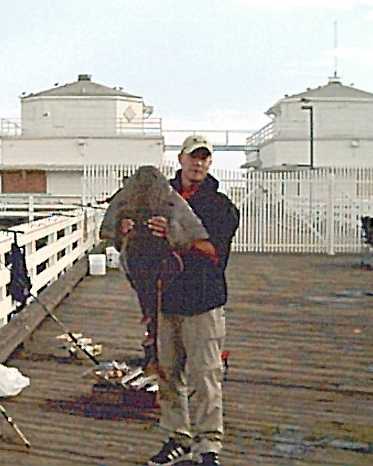 An angel shark taken at the Malibu Pier in 2005
An angel shark taken at the Malibu Pier in 2005
Bait and Tackle: Medium tackle, 30-pound or so line with size 2-4/0 hooks should suffice for these beasts.
Food Value: The flesh is considered very good and they have become the object of a considerable commercial fishery.
Comments: Their name is derived from the large pectoral fins that remind many of angel wings (and how about a buffalo wing and angel wing combo plate?). As mentioned, these guys (or girls) have the nasty habit of extending out their jaws in an explosive manner to capture food and, unfortunately, quite a few anglers have been bitten by angel sharks after the fish were landed. Never stick your hand or arm near the mouth of an angel shark unless you are absolutely sure it is dead.
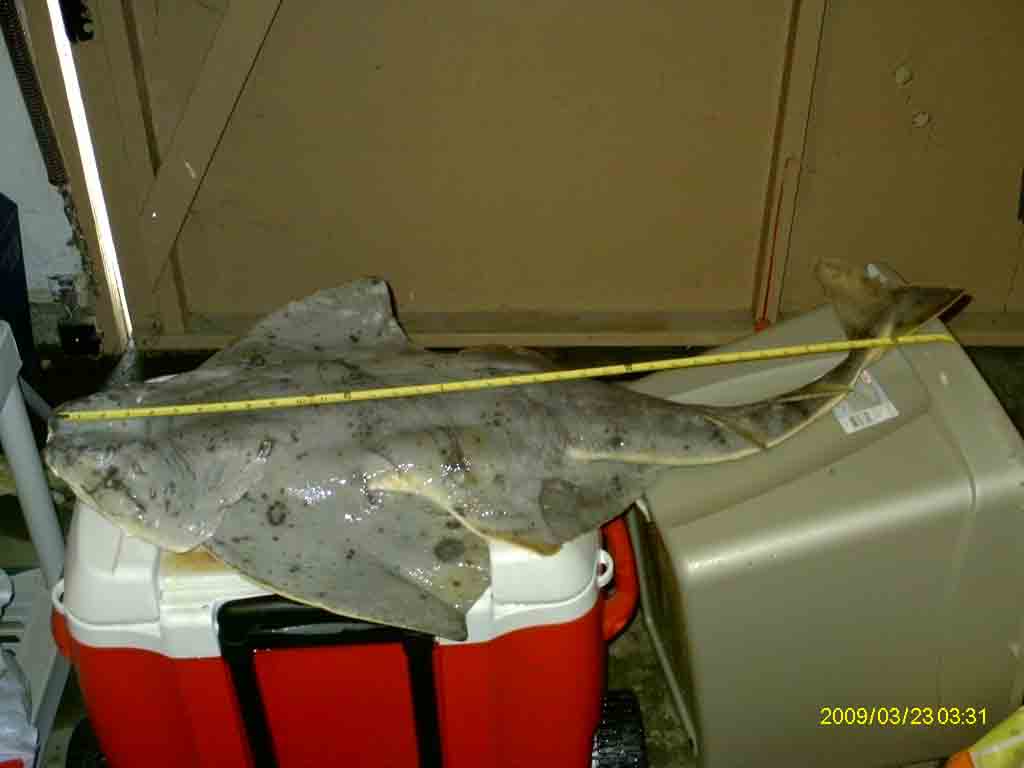 An angel shark from the Ventura Pier in 2011
An angel shark from the Ventura Pier in 2011
 43-inch, 30-lb angel shark caught by Wayne at the Cayucos Pier in April 1998 on squid
43-inch, 30-lb angel shark caught by Wayne at the Cayucos Pier in April 1998 on squid
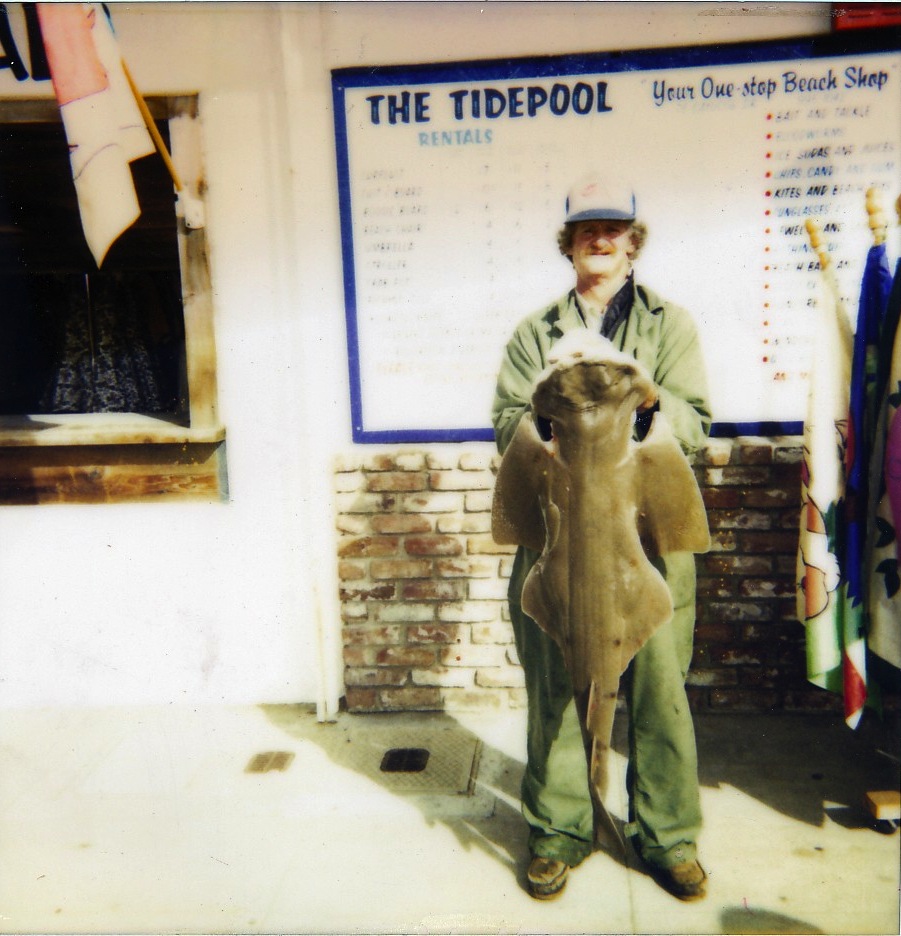 32-lb angel shark caught by Wayne at the Cayucos Pier in May 1997 on a live perch
32-lb angel shark caught by Wayne at the Cayucos Pier in May 1997 on a live perch
 Angel shark caught from the Capitola Wharf in 2011 (Photo courtesy of Capitola Bait and Boat)
Angel shark caught from the Capitola Wharf in 2011 (Photo courtesy of Capitola Bait and Boat)
 An angel shark caught at the Cayucos Pier by Dave Hutcheson in June 2006
An angel shark caught at the Cayucos Pier by Dave Hutcheson in June 2006














